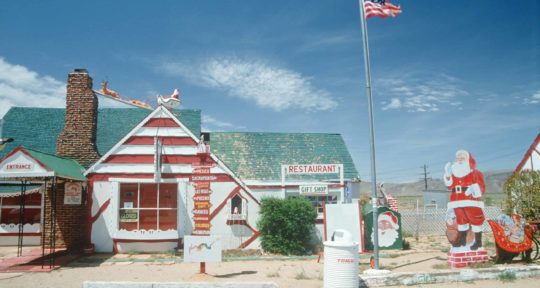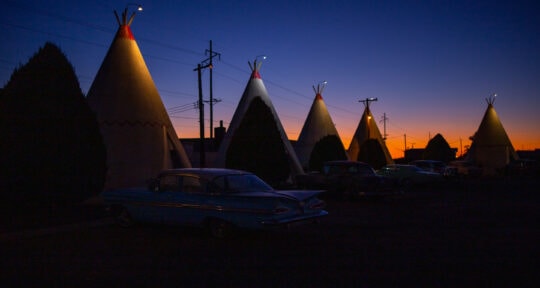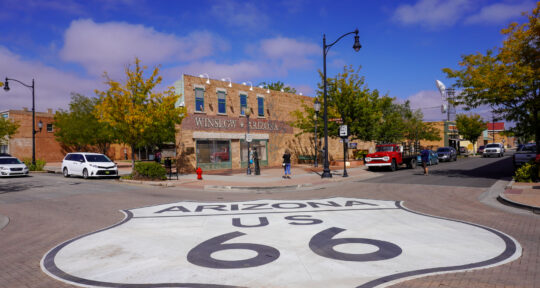For now, Seligman, Arizona, is quiet. The gleaming tour buses shuttling visitors from all over the world into town have yet to appear. As I lean up against Angel and Vilma Delgadillo’s Original Route 66 Gift Shop, I see a lone bicycle rider emerge from a block away, calmly pedaling down the street.
To this day, 93-year-old Angel Delgadillo rides to his small, kitschy gift shop along Route 66, the iconic highway that defines so much of this long-time barber’s life. He smiles and politely waves to a few picture-takers before dismounting and parking his bike near a large Betty Boop cutout.
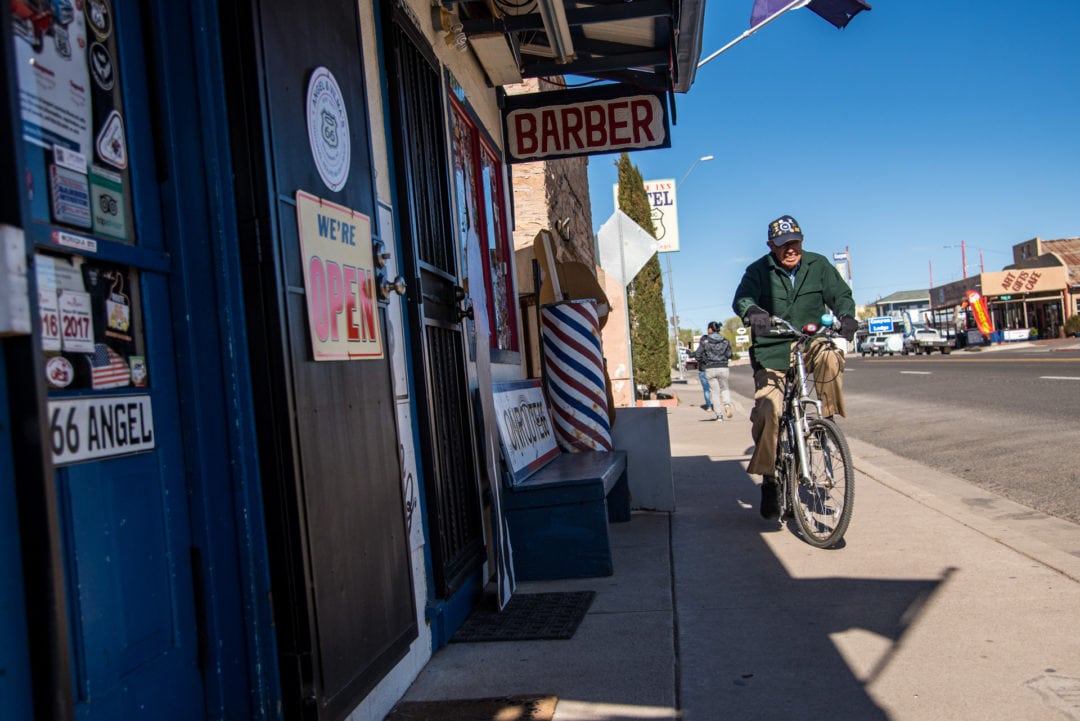
“Hello,” Delgadillo says, extending his hand. His voice is soft and his eyes are friendly. When he smiles, long, deep wrinkles cascade down each cheek. “Are you Joe?”
I shake his hand. “That’s me. Nice to meet you.”
“Nice to meet you, too. Let’s go inside so I can tell them I’m here.”
Inside the gift shop, Delgadillo walks with a quick, energetic spirit. Neatly arranged road-themed souvenirs—from shot glasses and postcards to t-shirts and belt buckles—are everywhere. Classic ‘50s doo-wop plays overhead and the smell of fresh-brewed coffee fills the room. He stops at the front counter to say good morning to his daughter Mirna, who now helps manage the shop, then kindly poses for pictures with a middle-aged couple from Canada.
“We came here hoping to meet you,” they tell him. “Thank you for what you’ve done.”
Delgadillo has become synonymous with the Mother Road, and like the thousands of visitors before me, we come wide-eyed and excited to hear his story. It’s one of a man who became a modern-day cultural icon and the “Guardian Angel of Route 66” after a hard-fought battle to save his town and the historic highway.
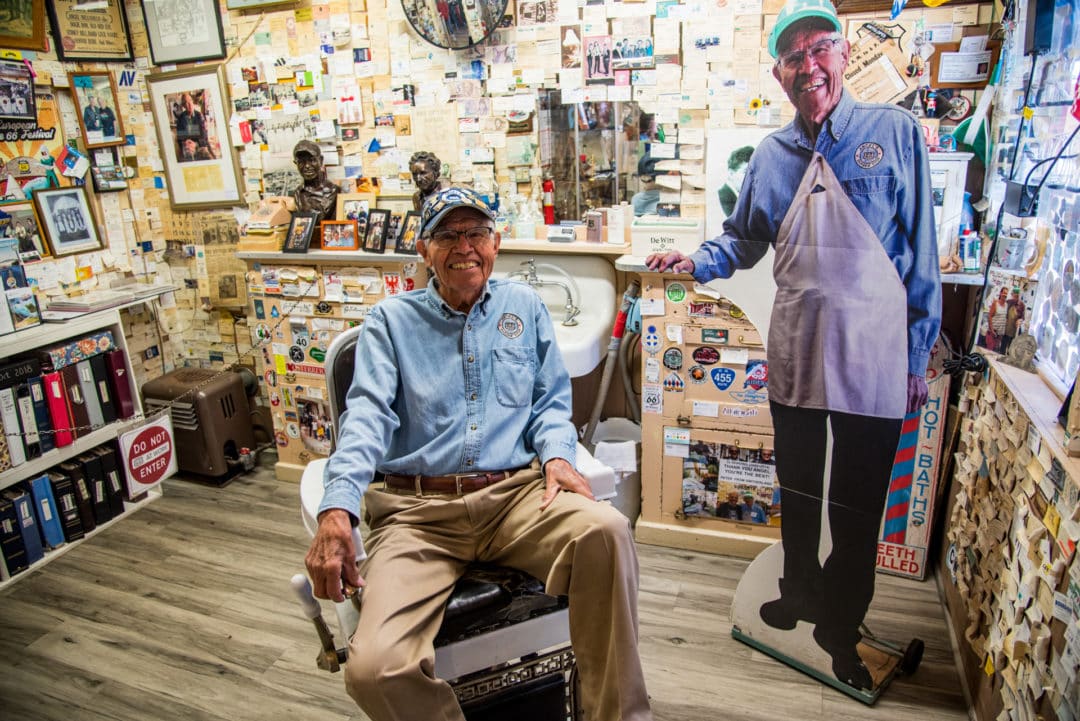
Shop. | Photo: Joe Rogers
“Our efforts were ignored, and it was a struggle, a real fight from day one,” Delgadillo says, finally settling into his original barber chair. Today, the cozy barbershop serves more like a history museum than a place for haircuts. Personalized messages, newspaper clippings, and numerous visitor photos adorn the walls. Next to us is a life-size cutout of Delgadillo with a big grin splashed across his face. “We the people fought the government. But we won!” he says.
The day the world stopped
Delgadillo was born in Seligman on April 19, 1927, to parents who had come from Mexico a decade earlier looking for work. By the time he was born, Delgadillo’s parents owned and operated a pool hall along a stretch of road that would eventually become Route 66, connecting Chicago to Santa Monica.
“But back in the early ‘20s, segregation was worse than it is now,” Delgadillo says, shaking his head. “My father noticed there wasn’t anyone who would give the Mexican or Indian people haircuts. So, he taught himself the barber profession and started cutting hair.”
“The town died for 10 long years. We were forgotten by the world.”
When Delgadillo was in the 10th grade, his parents asked, “Why don’t you try barbering?” After graduation, he did just that, and enrolled in barber college in Pasadena, California. Six months later he got his first job in Williams, Arizona, before returning home in 1950 to open his first barbershop in the family’s old pool hall. In 1972, Delgadillo moved the barbershop to its present location to take advantage of the tourist traffic flooding into town. But the moment when the newly-built I-40 freeway opened between Kingman and Ash Fork, everything changed.
“Everything was going beautiful until September 22, 1978,” Degadillo says and points toward a large window covered in stickers. “There were 9,000 automobiles that would go through Seligman every 24 hours. But at 2:30 in the afternoon, all the traffic went to I-40. The town died for 10 long years. We were forgotten by the world. I felt like our government said, ‘Angel, if you can swim, swim. If you can’t, drown.’ We were dead.”
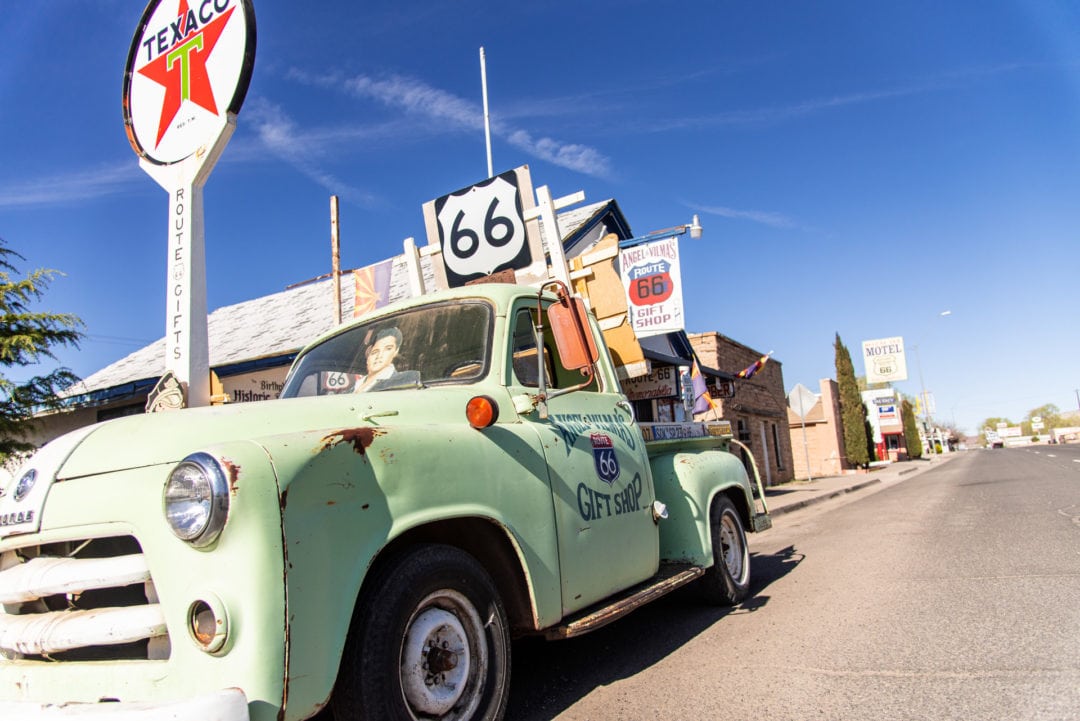
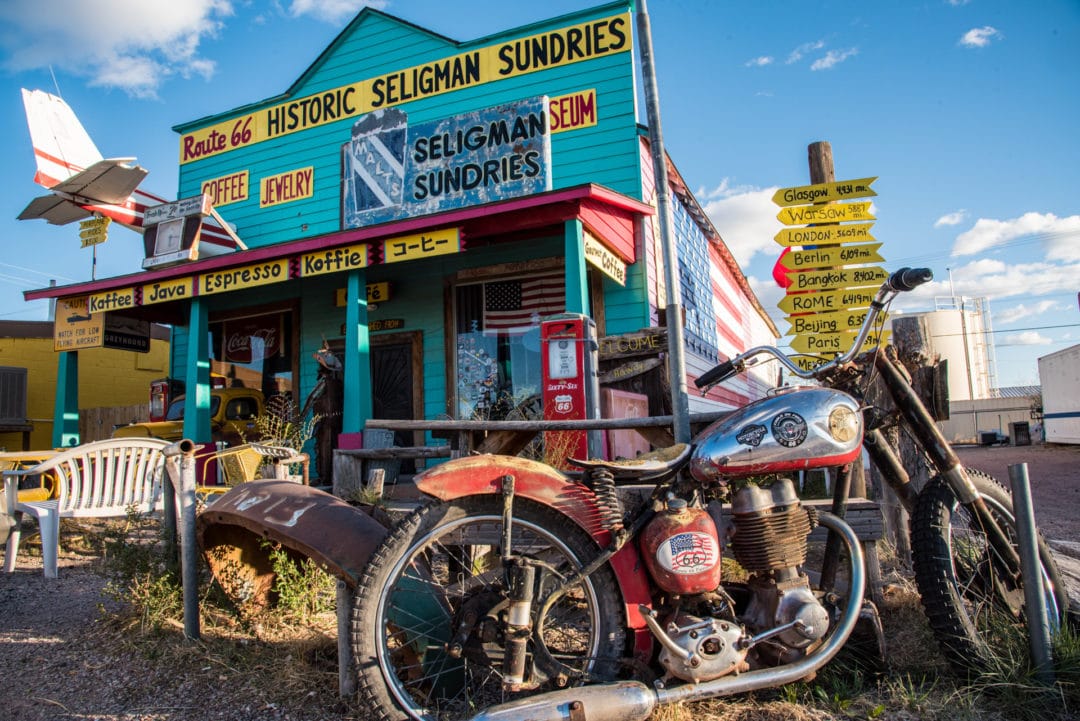
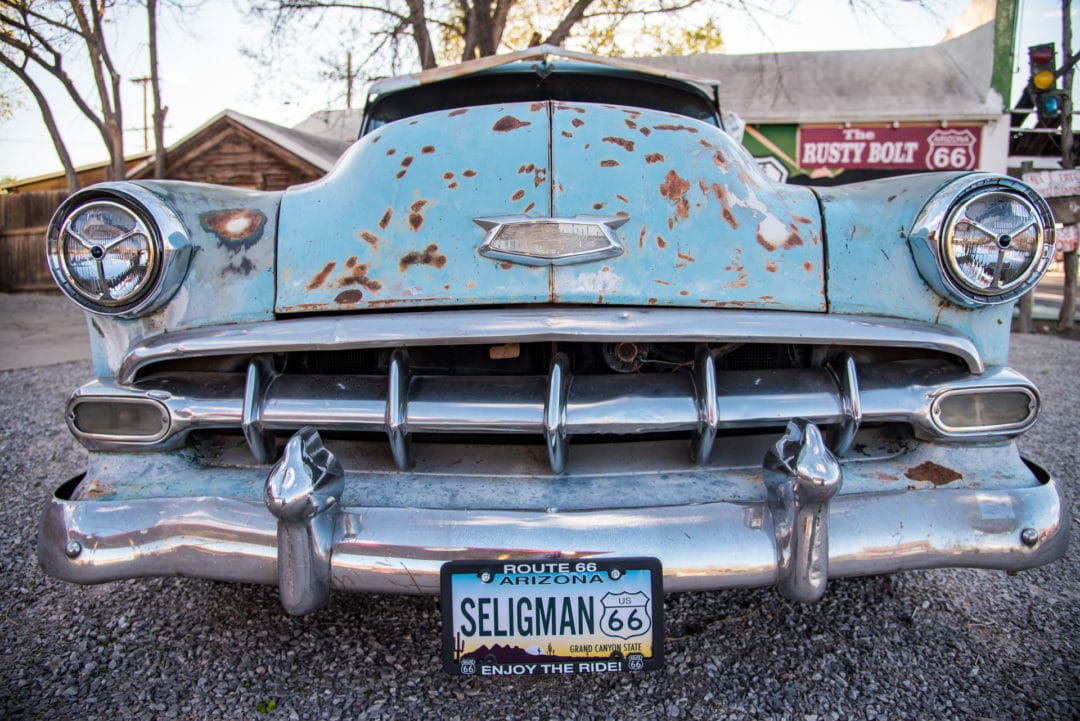

A long battle
Walking around Seligman on a summer day now, there are no signs of these hard times. An international melting pot of camera-clicking tourists walk through town every day, darting in and out of places like Seligman Sundries, the Rusty Bolt, and the world-famous Snow Cap Drive-In diner opened by Delgadillo’s late brother, Juan, in 1953.
By the early 1980s, though, the town was struggling. Delgadillo was still cutting hair five days a week, but money was tight. The few travelers who did stop by would share with him fond memories of family trips along the old highway when they were kids themselves.
“I heard it over and over,” he says. “Men and women told me, ‘This was the highlight of our travels’ when they drove with their parents to California. They missed the America of yesterday. We, the people. The road. The buildings. So I got an idea. Here is how we get our economy back.”
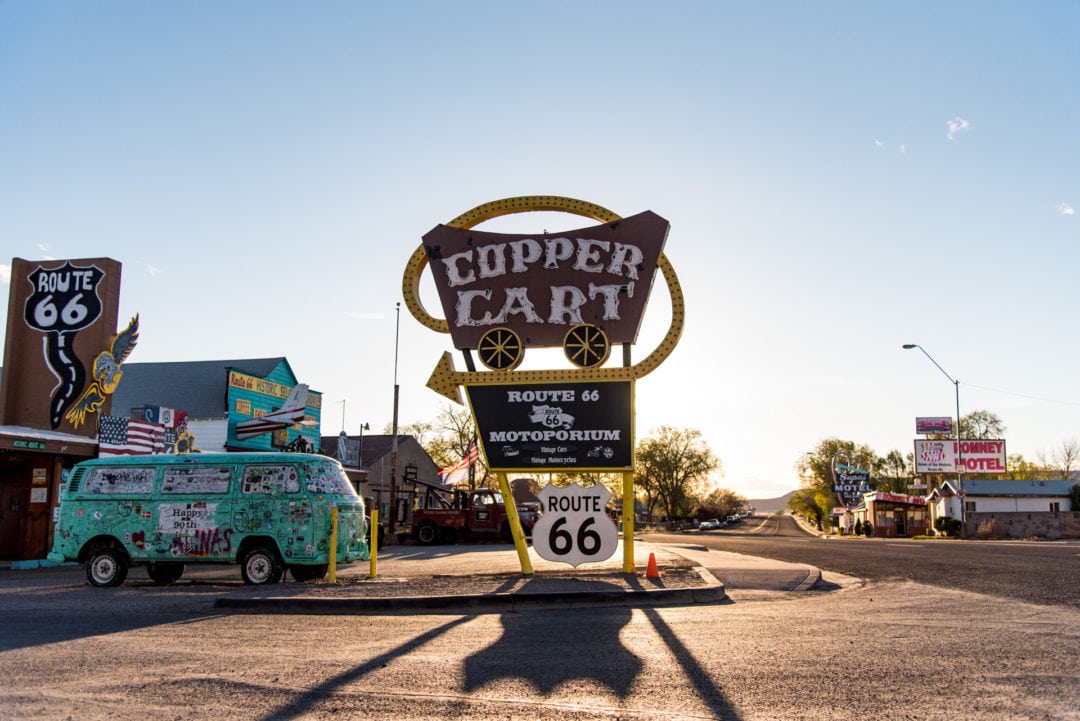
His idea was to ask the state to designate Route 66 as historic from Seligman to Kingman in hopes of reminding the traveling public of a more nostalgic drive. Delgadillo began talking to anyone who’d listen to him, in his barber chair and out on the street. He even took the idea to the local Chamber of Commerce but “no one listened, no one cared,” he says.
Nearly a decade after his initial idea, Delgadillo and his supporters—which now included people from Kingman and other communities along the old highway—finally formed the Historic Route 66 Association of Arizona in February, 1987. They made phone calls, wrote letters, and visited officials, but the county and state continued to ignore them. It wasn’t until 10 months later, after countless phone calls and a dedicated letter campaign, that their efforts paid off.
“Finally, the state made Route 66 historic from Kingman to Seligman in November, 1987,” Delgadillo says. “We didn’t know what the word ‘no’ meant. We never gave up and against all odds, we the people saved Route 66.”
Moving forward
Delgadillo retired 22 years ago. Most days, he shows up only when needed or just to meet a few fans from time to time. As we talk, more people file into the shop, many peeking their heads around the corner and asking to take a picture.
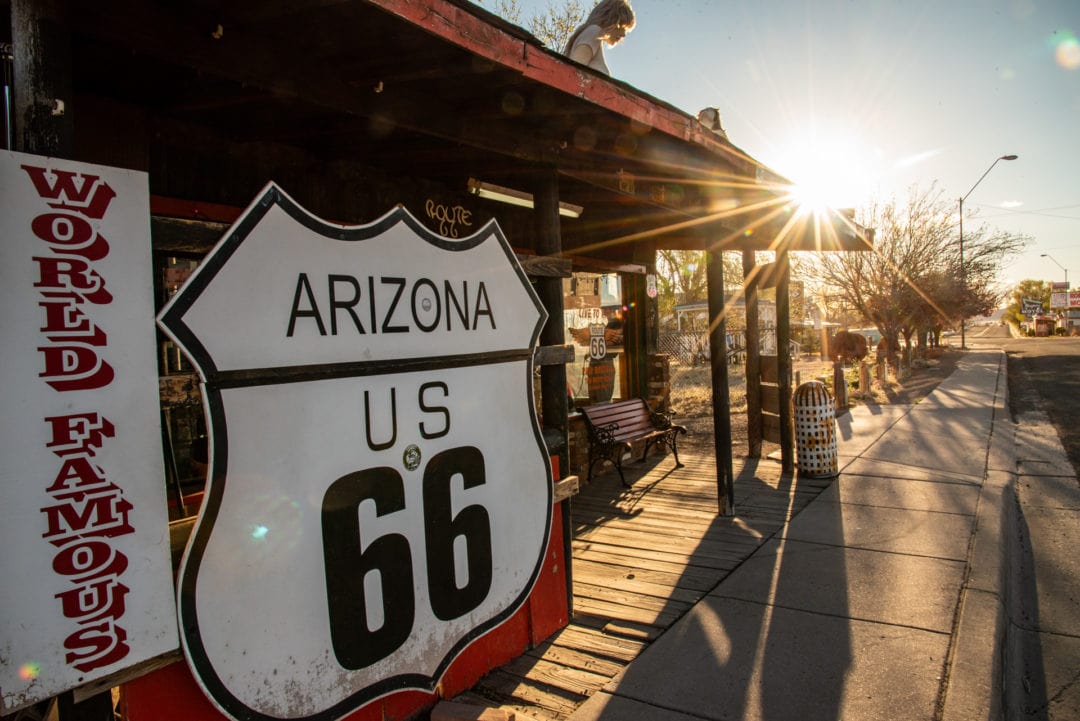
“Welcome, welcome,” he says, smiling.
I take my own selfie with him before leaving.
“Come back sometime, Joe,” he tells me and I promise to do so.
Outside, the warm afternoon sun casts a brilliant light upon the old highway. “You don’t know what you have until you lose it,” Delgadillo told me. I stop walking and look around. Buses rumble by, children follow their parents into the gift shop, and small groups gather a block away for pictures by the 1936 Ford parked in front of the Snow Cap.
Thanks to Delgadillo’s efforts, none of this will be forgotten. Route 66 will continue to live on alongside the story of its Guardian Angel.
If you go
Angel & Vilma Delgadillo’s Original Route 66 Gift Shop is open seven days a week from 9 a.m. to 4 p.m. They are also accepting online gift orders.

